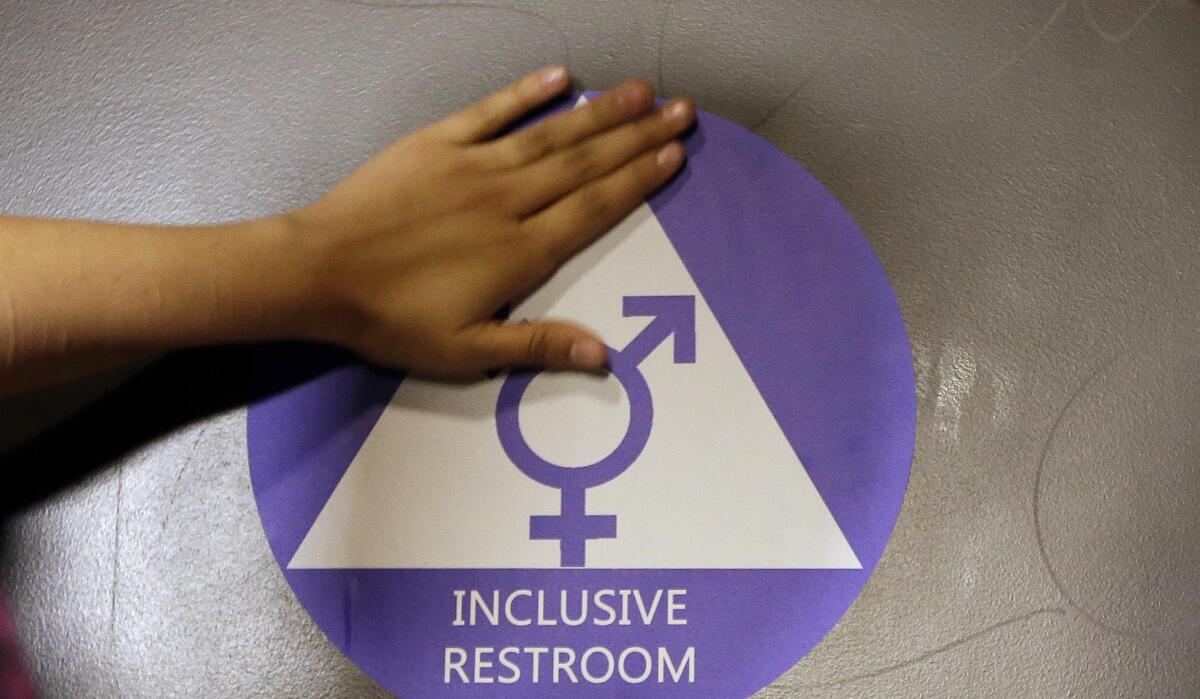What I didn’t know about my transgender child

- Share via
Our bungalow was still dark when my cellphone rang at 5 a.m. My husband and I had escaped for a much needed yoga retreat on the remote island of Koh Phangan, Thailand, when I got the phone call no parent ever expects to get — a call that four years of medical school, three years of pediatric residency training and 15 years of practicing pediatrics hadn’t prepared me for.
At the sound of the middle school principal’s voice, my heart started racing. “We know you are away and it is early, but we had to call you.” They had called my parents to pick up my middle child from school. “He told us he has been hurting himself because he has a secret that he doesn’t know how to tell you. He thinks he is a girl.”
My reaction was complete disbelief and denial. It had to be a mistake. My child, at 13, had never had a single sign that I would consider consistent with gender dysphoria — discomfort or distress over a mismatch between biological sex and one’s gender identity. And if anyone was going to recognize gender dysphoria in their child, certainly it would be a mother who is a pediatrician. I was going to fly back home to Los Angeles and clear this up. We would move on.
I hadn’t heard the word “transgender” even one time in all my developmental training in pediatrics. The only gender-related milestone we were ever taught was that a child should be able to tell you by the age of 3 if he or she is a boy or a girl. We learned about chromosomes, hermaphroditism, intersex, congenital adrenal hyperplasia and aromatase deficiency causing ambiguous genitalia. We were never taught about gender and the spectrum it lies on. Any education I had on transgender individuals came from what I saw portrayed in the media. I’d watched Caitlyn Jenner’s transition along with the rest of America and seen some news shows featuring toddlers wanting to dress in opposite gender clothing or play with traditionally opposite gender toys.
It wasn’t until September 2018, more than 15 months after the phone call about my daughter, that the American Academy of Pediatrics released its first policy statement on caring for transgender and gender non-conforming children through a gender-affirming approach that supports the gender they identify with rather than the sex assigned at birth. By the time the AAP released this statement, I had already had to educate myself on everything it covered and much more. By then, my daughter had already started hormone therapy, was thriving and out to the world, and was awaiting the court date for her legal name and gender change.
But it wasn’t all so simple. Before getting to where we were, my ignorance and lack of training had led to months of denial about my daughter’s true gender. My resistance to believing her resulted in the worst parenting mistakes I’ve ever made, switching her from therapist to therapist and delaying her medical transition for almost a year. Those months of denial and delay of care will forever be one of my greatest regrets.
I thought that my child couldn’t be transgender because she hadn’t shown signs of being transgender before age 13. My child never resisted a haircut or tried on her sister’s Cinderella costume. I was expecting my daughter to say, “I always knew I was in the wrong body,” rather than what she actually told me, which was that she never suspected she might be transgender before age 13.
I did not know that 50% or more of transgender people do not present until the start of puberty or later, and that 50% or more have not had the typical signs one associates with being transgender. The “typical signs” actually have nothing to do with biology — they are social constructs resulting from living in a gendered world.
While my daughter didn’t want to wear dresses as a child, she was struggling. She was often depressed, and no one could get to the root cause of her depression. She was brilliant, but had difficulty in many social situations and trouble making friends. She had some sensory issues and shied away from hugs and physical affection. Among my three kids, she was my “difficult” child, the subject of regular phone calls from her teachers at school. After she came out, I thought about how none of us, her teachers, the school counselor or her prior therapist had ever thought that maybe gender was the underlying issue.
After I was forced to come out of denial and get my daughter the appropriate care, her depression vanished. She is undeniably happy, radiant. She has more friends than she ever had as a “boy,” and she gives the longest, tightest hugs now. My daughter did have signs of being transgender. I just wasn’t properly trained to recognize them.
Paria Hassouri is a mother of three and a pediatrician in Los Angeles. She is writing a memoir about her evolution during her daughter’s transition. She can be reached at pariahassouri.com.
More to Read
A cure for the common opinion
Get thought-provoking perspectives with our weekly newsletter.
You may occasionally receive promotional content from the Los Angeles Times.









